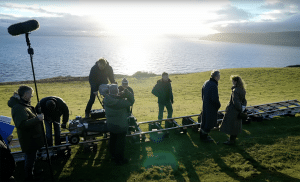Indie game development is on fire, and the tools of the trade are more accessible than ever. Here are 7 paid and free resources you should know about.
Video games are a multi-billion dollar industry that deserve the same serious regard as any other art form. It’s a craft you can learn at school, but it’s also something you can teach yourself. As long as you have the passion and willingness to learn, there are resources out there to help hone your talents.
But it can get expensive. So, instead of reaching deep into your wallet before you’re sure about video game development, we’ve compiled a list of free and affordable resources to help you on your way.
Free Resources
Documentaries and Interviews
Before you do anything, you have to watch Indie Game: The Movie. The documentary follows four aspiring indie game developers through their video game development journey, warts and all. Those three games developed during the documentary — Fez, Braid, and Super Meat Boy — are now iconic indie titles that hold up ten years later. The documentary is timeless, and the lessons are no less true today than they were in 2012. While you can’t stream it anywhere, it’s available to rent for the price of a cup of coffee.

But I promised something free, so here it is. Skipping ahead a few years brings us to possibly my favorite of all video game-related YouTube channels: NoClip. The channel, started by video game journalist Danny O’Dwyer, explores both retro and modern game development through the eyes of the developers, and it doesn’t skimp on detail. NoClip documentaries are typically an hour long (and sometimes twice that).
In addition, O’Dwyer’s documentaries have unprecedented access to big-name studios, such as Guerilla Games, id Software, and Arkane Studios (both Austin and Lyon), which allows him to go deeper into the development of these games than any other piece of content. One of my favorite documentaries is when he did a six-episode series on Supergiant games while Hades was in development — the game went on to win numerous GOTY awards.
Also on YouTube is another favorite of mine, MinnMax. This channel is mainly a podcast roundtable created by ex-Game Informer journalists, but there are many interviews with video game developers as well. Recent interviews include the developers behind some of the biggest games this past year, such as Halo Infinite, Nobody Saves the World, Tunic, and Marvel’s Guardians of the Galaxy.
Other quick shoutouts on YouTube include The Video Game History Foundation, People Make Games, Harada’s Bar, and Modern Vintage Gamer. And there are so many more channels to find out there.
GDC Talks
Before you start looking for the comments section, we realize that GDC talks are gated behind a very expensive ($599) paywall as part of the GDC Vault. This veritable treasure trove of talks ranges from postmortems, where creators go into a very technical deep dive of their game, to level design, to even discussions on the financial side of the video game industry.
That being said, the GDC YouTube channel has some great content that averages between 30 minutes to an hour. Though you won’t have access to the entire vault, there are still many videos that don’t hold back on the finer points of video game development. For example, one recent video explores how the studio behind Rocket League scaled their game to cater to a free-to-play crowd, while another video explained level design in Horizon Forbidden West. If you’re already on YouTube, you may as well watch something both interesting and educational.
Video Game Engines: Unreal 5 and Unity
A video game engine has nothing in common with the kind of engine you may be familiar with. Video game engines are a set of tools that encompass the development process, from narrative and sound design to animation and motion capture. While bigger studios have developed their own proprietary engines over the years, Unreal 5 and Unity are two that are freely available to everyone.
There are some caveats, though. With Unreal Engine 5, using the service is free until you hit $1 million in revenue, at which point you’ll pay a 5% royalty to Epic. With Unity, the service is free if you’ve had revenue or funding less than $100,000 in the past year.
Financials aside, the biggest reason to go with either of these is that there is a boatload of content on the internet that can guide you through the process of making games. You’ll never be too far from finding a tutorial for the thing you’re stuck on.
Blender
Blender is to 3D animation what DaVinci Resolve is to video editing. If you’re more focused on the animation side of game design, there’s no better software for that than Blender, which covers all the bases. The Blender website says it best:
“It supports the entirety of the 3D pipeline—modeling, rigging, animation, simulation, rendering, compositing and motion tracking, even video editing and game creation.”
Though it’s not a full-on video game engine, you can use Blender for video game development, which will help you master your craft. The best part is Blender is free and open-source, using a GNU General Public License that makes it available for personal and commercial use. And just like the video game engines above, Blender is another application with many users and, therefore, lots of tutorials and how-tos.
Paid (But Still Very Affordable)
Humble Bundle
Humble Bundle is primarily known as the place that sells video game bundles for a very low price, but the other bundles sold should be equally enticing to an aspiring video game developer. The software bundles section is where it’s at for video game development. Right now, as I type this article, there are three amazing video game software bundles.

One of them, the Unreal Engine 5 bundle, costs only $25, but the nine items inside, mostly courses, are valued at nearly $1,500. The other two bundles include asset packs, music, software, and a lot more. A recent bundle, which is no longer being sold, offered a handful of Blender courses on Udemy, as well as 3D assets for making your own game.
With Humble Bundle’s always-rotating selection of bundles, it’s a good idea to check in every week. You should also look out for book bundles, which sometimes include books on computer programming for various programming languages.
Books
Yes, I know. Books aren’t the first thing you think of when it comes to video game development. However, the quality of video game books has vastly improved in recent years. Two of my favorite books about video games are from the Bloomberg reporter Jason Schreier. His video game industry coverage is the best in the business; he has a reputation for breaking the biggest stories in gaming.
His first book, Blood, Sweat, and Pixels: The Triumphant, Turbulent Stories Behind How Video Games Are Made covers the development of hugely popular video games like Diablo III, Stardew Valley, Shovel Knight, Destiny, and more. Each chapter covers a video game and the studio or team that made it, and each one highlights just how hard it is to take a video game from pre-production all the way to the finish line.
If you want to know what the book is like, you can check out the panel with the author and several developers in the video below.
Schreier’s second book, Press Reset, picks up where the first one left off, offering a somber look into the industry’s demanding work schedule and what happens when people and studios take on too much. It’s a book that’s hard to put down, but it’s also heartbreaking. Most importantly, however, Press Reset is eye-opening, and you should definitely read it before jumping into the business.
I also recommend Iwata Asks. The book created from interviews that the late president of Nintendo Japan, Satoru Iwata, gave in his lifetime. Through the interviews, Iwata-San shares infinite wisdom on video game development and management techniques that helped Nintendo get to where it is today. If anything, just learning about him and his life is enough to justify this book.
Console Wars is the other book you should read. It looks into the heated video game console wars of the ’80s and ’90s between Nintendo and Sega. The fanciful dialogue reads a bit too much like a drama at points, yet there is still a lot of truth in those pages. If you didn’t know about the “Sega does what Nintendon’t” marketing campaign, now’s a good time to catch up.
Artbooks
I know I just recommended several books, but artbooks are different. There are actually two kinds of art books; there are art books that show off only art, and then there are art books that combine art and developer interviews and commentary. Either one will work if you’re an artist, but the latter is best if you want to learn about the video game development process.
The artbook for Control, The Art and Making of Control, is a prime example. It’s a high-quality book that includes priceless information on essentially every aspect of the video game. You’ll learn about brutalist architecture, narrative design, level design, VFX, and everything in between. Outside of the people at the Finnish studio, Remedy, this book is the closest you’ll get to learning about Control’s development process.
That’s just one example. There is no shortage of video game art books, and while not all are as detailed as The Art of Making Control, you should search for the artbooks of your favorite games. I’ve bought a lot this past year, and I have even more on an ever-growing list on Amazon.
Cover image via Indie Game: The Movie (BlinkWorks Media).
If you need free assets to design your own games, we’ve got you covered.




